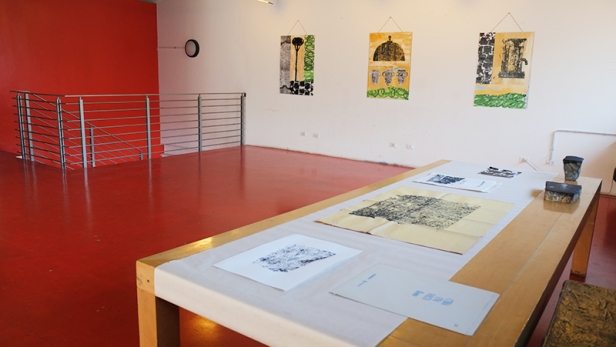ESP / ENG
Esta fase del proyecto Códigos se desarrolló entre el 5 y el 20 de septiembre de 2019. Los cinco primeros días sirvieron para hacer research en la ciudad y buscar elementos con los que trabajar. Una vez finalizada la etapa de documentación, el proyecto se desarrolló en la sala Laboratorio del MACRO (Museo de Arte Contemporáneo de Roma), un espacio abierto al público, por lo que los visitantes del museo fueron una parte activa del proyecto, aportando su visión de la ciudad. Durante todo este proceso fue indispensable la asistencia y el apoyo de la urbanista Giorgia Dal Bianco y el arquitecto Antonio Stella Richter.
This phase of the Codes project took place between September 5 and 20, 2019. The first five days served to do research in the city and look for elements to work with. Once the documentation stage was completed, the project was developed in the Laboratory room of MACRO (Museum of Contemporary Art of Rome), a space open to the public, so that the visitors of the museum were an active part of the project, contributing their vision from the city. Throughout this process, assistance and support of the urban planner Giorgia Dal Bianco and the architect Antonio Stella Richter was indispensable.

Roma es una ciudad en la que la información es abrumadora, allá a donde se dirija la mirada se encuentran distintos momentos de su historia, a menudo conviviendo, enfrentados o incluso superpuestos. Construcciones de la Antigua Roma junto a torres medievales, palacios del Ottochento y una trama de tags que cubren las calles. Las fuentes conocidas como nasone, el pino romano, los suelos adoquinados con sanpietrinis, elementos arquitectónicos como los puentes o las cúpulas, sobresalientes en el skyline romano son algunos de los elementos empleados en el proyecto.
Rome is a city where information is overwhelming, wherever the gaze is directed, there are different moments in its history, often living together, facing or even overlapping. Constructions of Ancient Rome with medieval towers, palaces of Ottochento and tags that cover the streets. The fountain known as nasone, the Roman pine, the cobbled floors with sanpietrinis, architectural elements such as bridges or domes, outstanding in the Roman skyline are some of the elements used in the project.






En la arquitectura prevalecen los tonos crema, amarillentos y ocres de edificios con la pintura desgastada, que dejan ver las distintas capas de color. También la omnipresente vegetación, que funciona como elemento conector entre las distintas zonas de la ciudad, por muy diferentes que sean los barrios entre sí, todos tienen en común la presencia de la vegetación, entre la que destaca el pino romano.
In architecture, cream, yellow and ocher tones of buildings with worn paint prevail, which show the different layers of color. Also the omnipresent vegetation, which works as a connecting element between the different areas of the city, no matter how different the neighborhoods are from each other, all have in common the presence of vegetation, among which the Roman pine stands out.










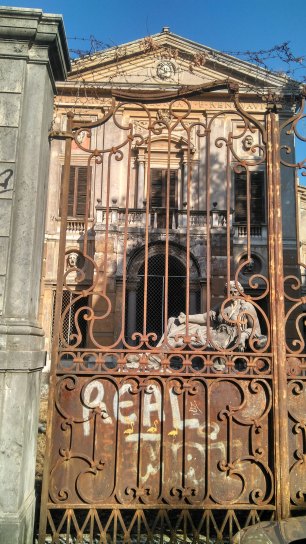
El mármol travertino es uno de los materiales más presentes en Roma, siendo utilizado en todo tipo de edificios, escaleras, suelos y ornamentos. Tiene una textura muy reconocible, tanto este como el sanpietrino, fueron empleados en el proyecto para hacer estampaciones.
Travertine marble is one of the most present materials in Rome, being used in all types of buildings, stairs, floors and ornaments. It has a very recognizable texture, both this and the sanpietrino, were used in the project to make prints.


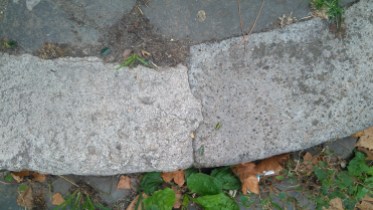
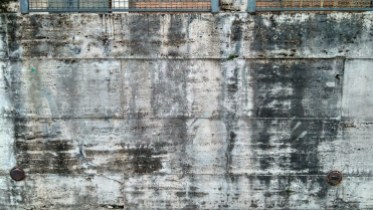

Además, se tomó como referencia los iconos de los Rioni (regiones). Los Rioni son las primeras subdivisiones urbanas establecidas en Roma en el siglo IV antes de Cristo. Han evolucionado a lo largo de la historia, y actualmente perviven 22. Cada uno de ellos tiene un símbolo, un escudo que habla de su historia, son un código en sí mismos.
In addition, the icons of the Rioni (regions) were taken as a reference. The Rioni are the first urban subdivisions established in Rome in the fourth century BC. They have evolved throughout history, and currently survive 22. Each of them has a symbol, a shield that speaks of its history, they are a code in themselves.



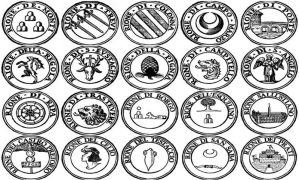
La sala Laboratorio sirvió como taller y lugar de exposición. Repartidas entre las dos plantas se mostraron las pruebas realizadas en los primeros días y una serie de piezas de 70×100 cm. montadas sobre cartón.
The Laboratory room served as a workshop and exhibition venue. Spread between the two floors, the tests carried out in the first days were shown and a series of 70×100 cm. pieces mounted on cardboard.
Las primeras pruebas se llevaron a cabo sobre distintos tipos de papel, empleando pintura plástica, sprays y estampación mediante trozos de mármol travertino y sanpietrinos recogidos de la calle.
The first tests were carried out on different types of paper, using plastic paint, sprays and stamping using travertine marble pieces and sanpietrinos collected from the streets.
El resto de la muestra se compone de siete collages sobre cartón en los que se pone en práctica el código: Una serie de imágenes con información encriptada sobre la ciudad de Roma.
The rest of the exhibition consists of seven collages on cardboard in which the code is put into practice: A series of images with encrypted information about the city of Rome.
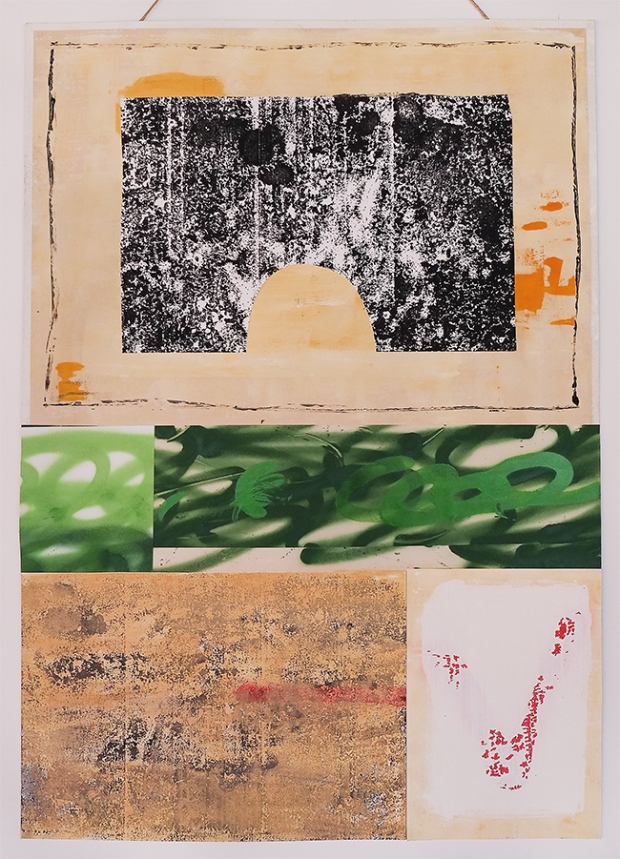






Las dos últimas piezas de la muestra se titulan 4º 5º/1943.
El quinto quarto es la denominación gastronómica para lo que queda del animal después de extraer los cuartos delanteros y traseros: tripas, corazón, orejas, lengua, sesos etc. Antiguamente se decía que el primer cuarto para los nobles, el segundo cuarto para el clero, el tercer cuarto para la burguesía, el cuarto cuarto para los soldados y el proletariado se alimentaba con los restos: el quinto cuarto. Si bien no es un término exclusivamente italiano, Roma es una ciudad históricamente pobre, por lo que en su gastronomía, el quinto quarto ocupa un lugar importante.
En 1943, Roma fue bombardeada como parte de los bombardeos estratégicos de los aliados, dejando 3.000 muertos y 11.000 heridos.
The last two pieces of the sample are titled 4th 5th / 1943.
The Quinto quarto (fifth quarter) is the gastronomic denomination for what is left of the animal after extracting the front and rear quarters: guts, heart, ears, tongue, brains etc. Formerly it was said that the first room for the nobles, the second room for the clergy, the third room for the bourgeoisie, the fourth room for the soldiers and the proletariat fed on the remains: the fifth quarter. Although it is not an exclusively Italian term, Rome is a historically poor city, so in its gastronomy, the fifth quarter occupies an important place.
In 1943, Rome was bombed as part of the strategic bombings of the Allies, leaving 3,000 dead and 11,000 injured.











